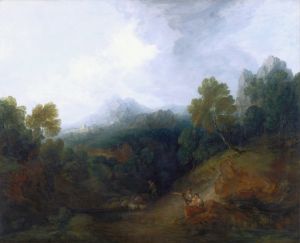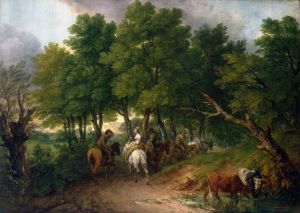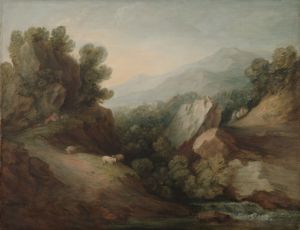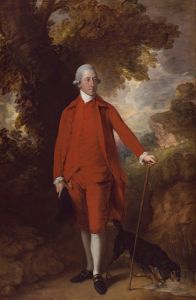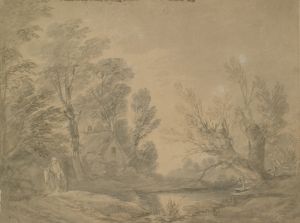
Wooded Landscape with Gypsy Encampment
A hand-painted replica of Thomas Gainsborough’s masterpiece Wooded Landscape with Gypsy Encampment, meticulously crafted by professional artists to capture the true essence of the original. Each piece is created with museum-quality canvas and rare mineral pigments, carefully painted by experienced artists with delicate brushstrokes and rich, layered colors to perfectly recreate the texture of the original artwork. Unlike machine-printed reproductions, this hand-painted version brings the painting to life, infused with the artist’s emotions and skill in every stroke. Whether for personal collection or home decoration, it instantly elevates the artistic atmosphere of any space.
Thomas Gainsborough's "Wooded Landscape with Gypsy Encampment" is a notable example of 18th-century British landscape painting. Gainsborough, born in 1727 in Sudbury, Suffolk, was one of the most prominent British artists of his time, renowned for his portrait and landscape paintings. This particular work exemplifies his skill in capturing the natural beauty and atmospheric qualities of the English countryside.
"Wooded Landscape with Gypsy Encampment" is believed to have been painted around the mid-18th century, during a period when Gainsborough was increasingly focusing on landscapes, despite his financial success with portraiture. The painting depicts a serene and idyllic scene, featuring a dense forest with a clearing where a group of gypsies has set up camp. The composition is characterized by its lush greenery, with tall trees forming a canopy that filters the light, creating a play of shadows and highlights on the forest floor.
Gainsborough's technique in this painting reflects his admiration for the Dutch landscape painters of the 17th century, such as Jacob van Ruisdael. He employed a loose and fluid brushwork style, which allowed him to convey the textures and movement of foliage and the dappled light with remarkable subtlety. The use of earthy tones and a harmonious color palette enhances the naturalistic feel of the scene, inviting viewers to immerse themselves in the tranquil environment.
The inclusion of a gypsy encampment in the painting adds a narrative element to the landscape. During Gainsborough's time, gypsies were often romanticized in art and literature as symbols of freedom and a connection to nature, despite being marginalized in society. By incorporating these figures into his work, Gainsborough not only adds human interest but also reflects contemporary attitudes and the fascination with the 'exotic' and the 'other.'
Gainsborough's landscapes were not mere reproductions of specific locations but rather idealized visions of nature. He often combined elements from different places to create a composition that conveyed the essence of the countryside. This approach is evident in "Wooded Landscape with Gypsy Encampment," where the setting feels both familiar and timeless, capturing the viewer's imagination.
The painting is also notable for its atmospheric perspective, a technique Gainsborough used to create depth and distance. By softening the outlines and reducing the intensity of colors in the background, he effectively draws the viewer's eye into the scene, creating a sense of vastness and tranquility.
"Wooded Landscape with Gypsy Encampment" is housed in the National Gallery in London, where it continues to be appreciated by art enthusiasts and scholars alike. It stands as a testament to Gainsborough's mastery of landscape painting and his ability to convey the beauty and serenity of the natural world. Through works like this, Gainsborough helped elevate landscape painting to a respected genre in British art, influencing future generations of artists.
In summary, Thomas Gainsborough's "Wooded Landscape with Gypsy Encampment" is a masterful representation of 18th-century British landscape art, showcasing the artist's skill in composition, technique, and his ability to infuse a narrative within a natural setting.







